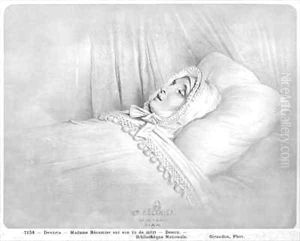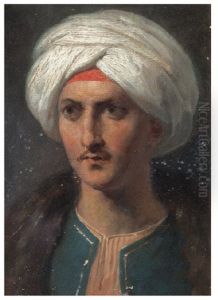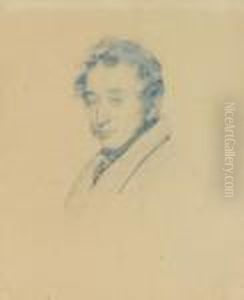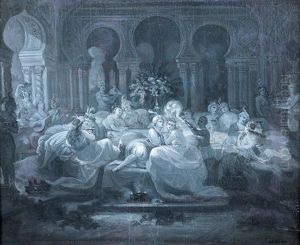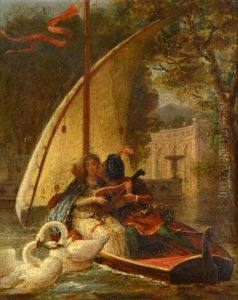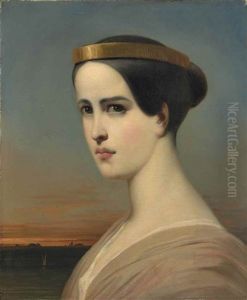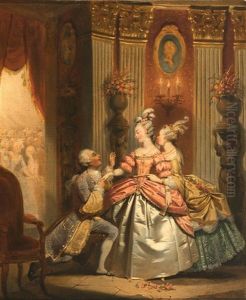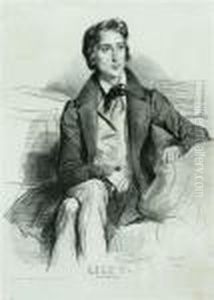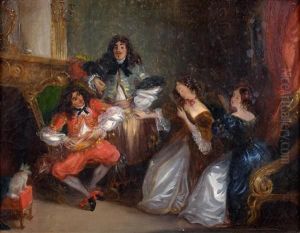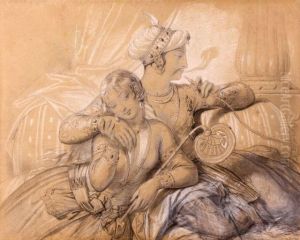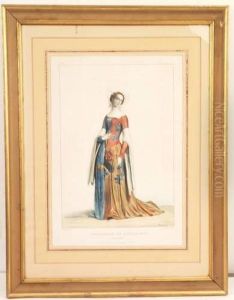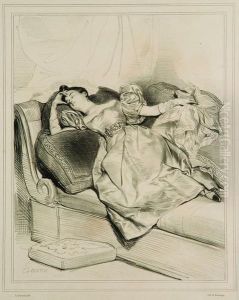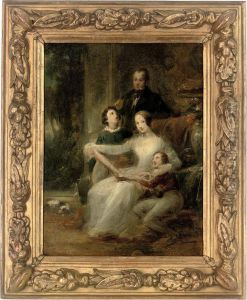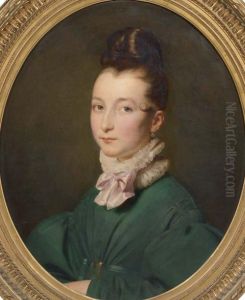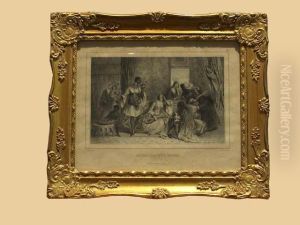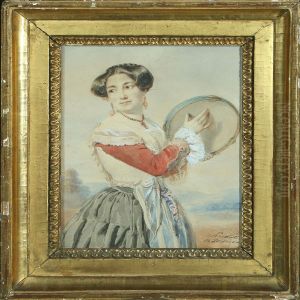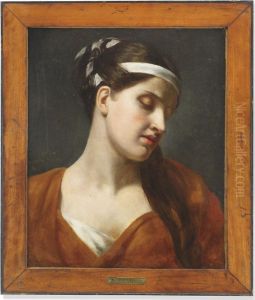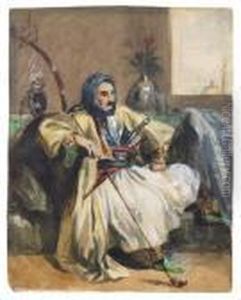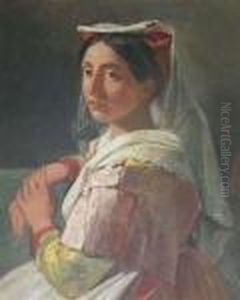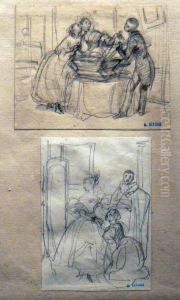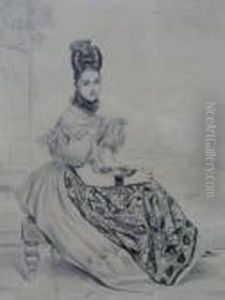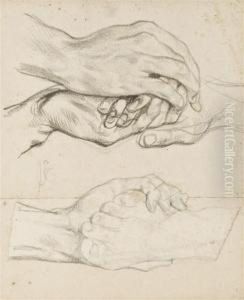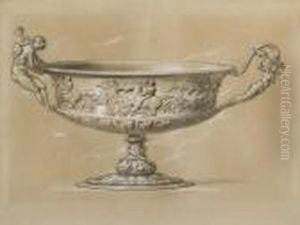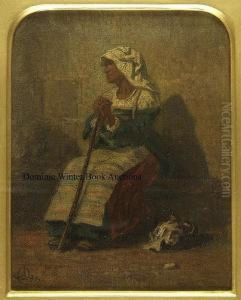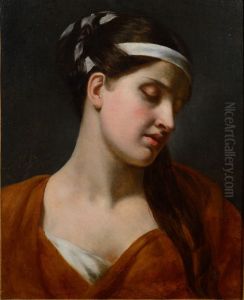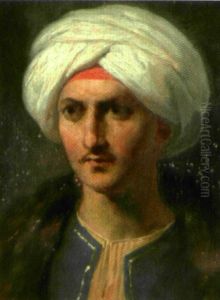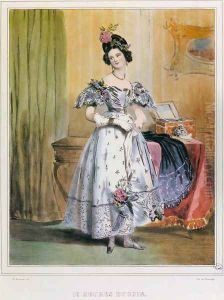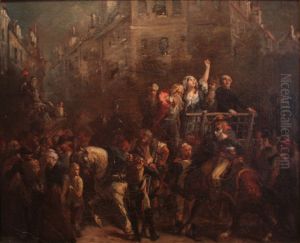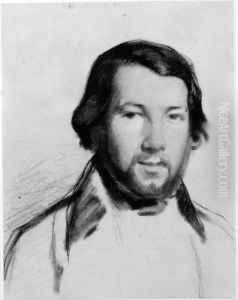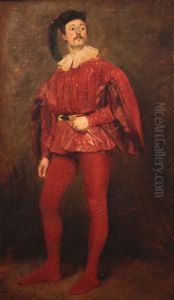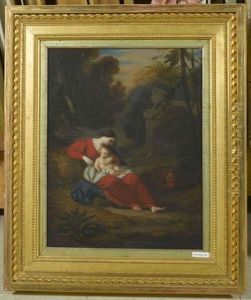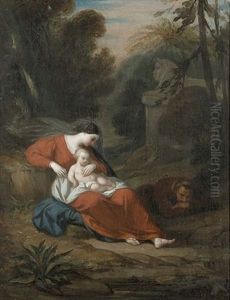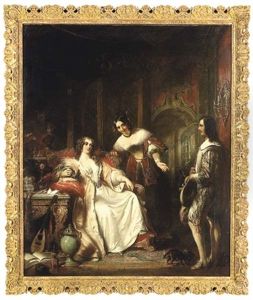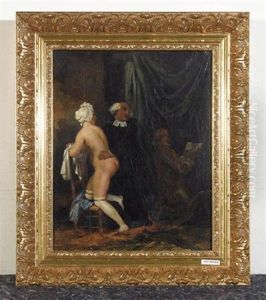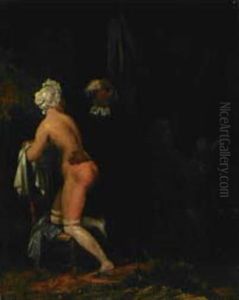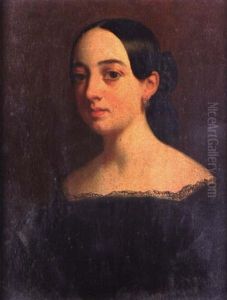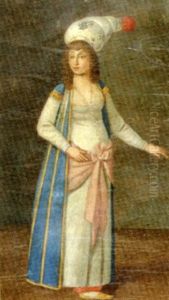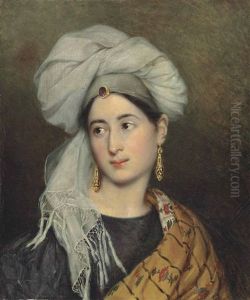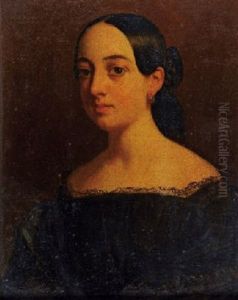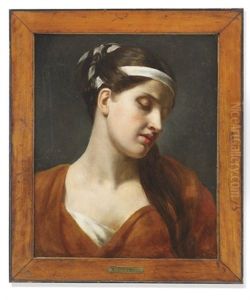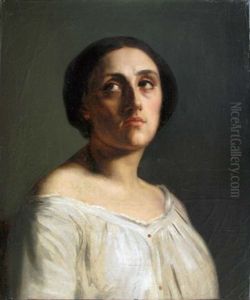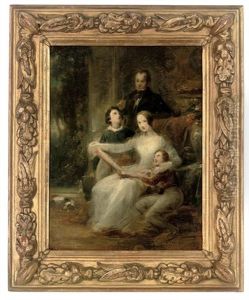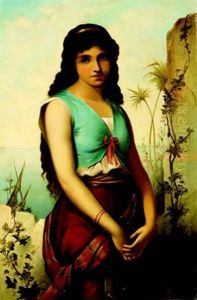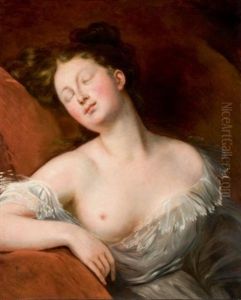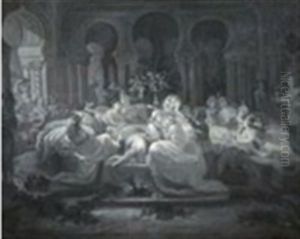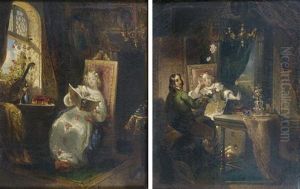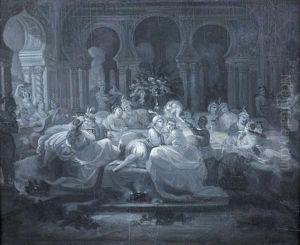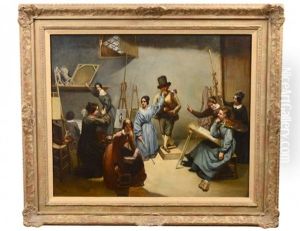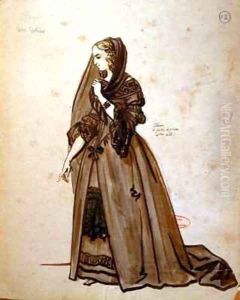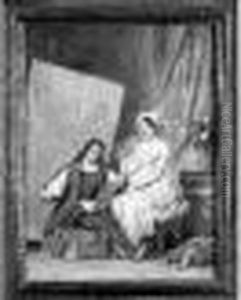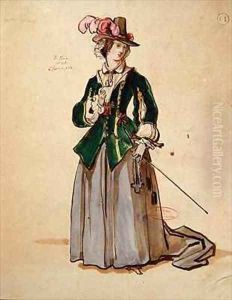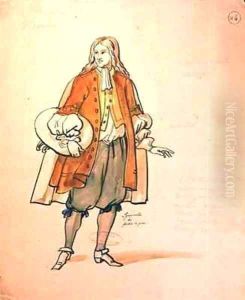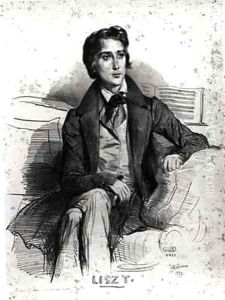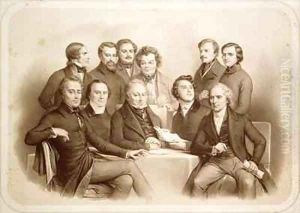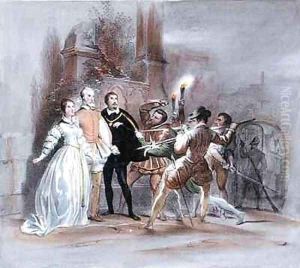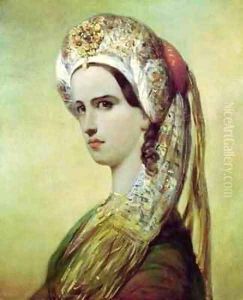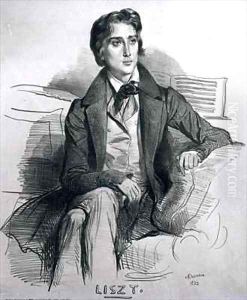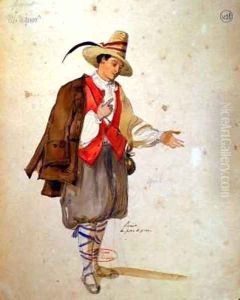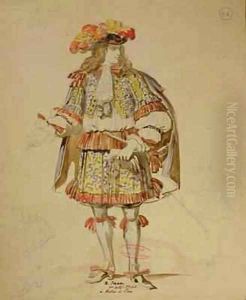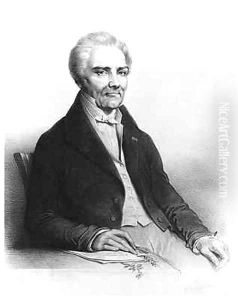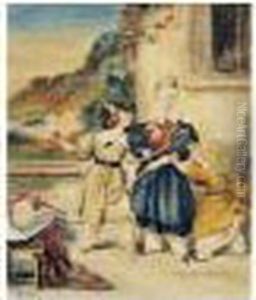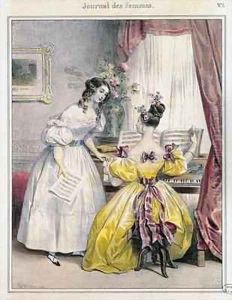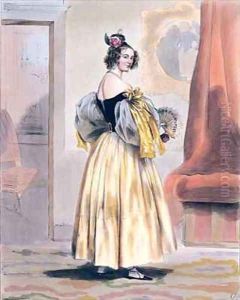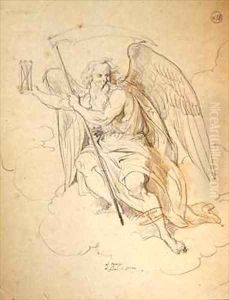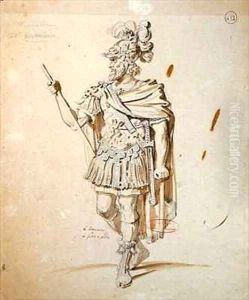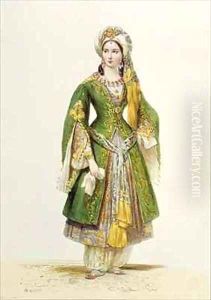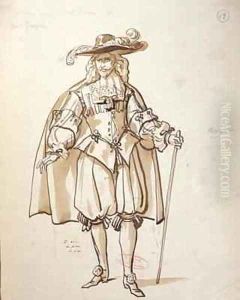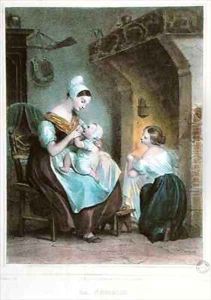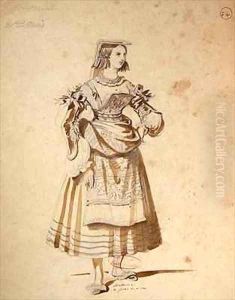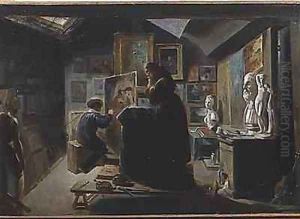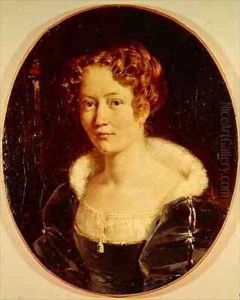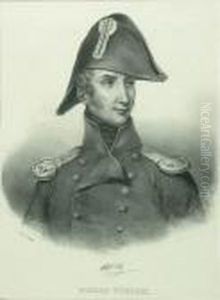Achille-Jacques-Jean-Marie Deveria Paintings
Achille-Jacques-Jean-Marie Devéria was a French painter and lithographer known for his portraits and lithographs that captured the Romantic spirit of his era. Born on February 6, 1800, in Paris, France, Devéria was part of a family deeply involved in the arts; his brother Eugène Devéria was also a painter, and his uncle was the playwright Pierre-Antoine Lebrun.
Devéria started his career as a lithographer, illustrating works of various writers, including Sir Walter Scott and Lord Byron, which helped to popularize their writings in France. He was one of the leading lithographers in Paris during the 1820s and 1830s, a period that saw a boom in the medium, thanks to technical advances and a growing middle-class audience for prints.
In the 1820s, Devéria became associated with the Romantic movement, and his studio became a gathering place for prominent Romantic writers and artists. His own works were characterized by an emphasis on color and a fascination with medieval and exotic subjects, which was typical of the Romantic sensibility. Devéria's success was also due in part to his skill in capturing a good likeness in his portraits, which made him popular with the Parisian elite.
One of his most famous works is 'The Birth of Henri IV' (1827), painted by his brother Eugène but for which Achille did significant work. He also produced a series of erotic prints that were considered scandalous at the time.
In 1839, Devéria's career took a turn when he was appointed as the curator of the Egyptian Antiquities department at the Louvre Museum. His interest in Egyptology was sparked by the wave of Egyptomania that swept through Europe after Napoleon's campaign in Egypt. Devéria went on to participate in the scholarly decipherment of Egyptian hieroglyphs.
Devéria's later years were dedicated mostly to his Egyptological work, and he published several scholarly articles on the subject. He was also involved in organizing exhibitions of Egyptian artifacts and contributed to the expansion of the Louvre's collection of Egyptian antiquities.
Achille-Jacques-Jean-Marie Devéria died on December 23, 1857, in Paris. His contributions to French Romantic art and lithography, as well as his work in Egyptology, have left a lasting legacy in both art history and the study of ancient Egypt.
